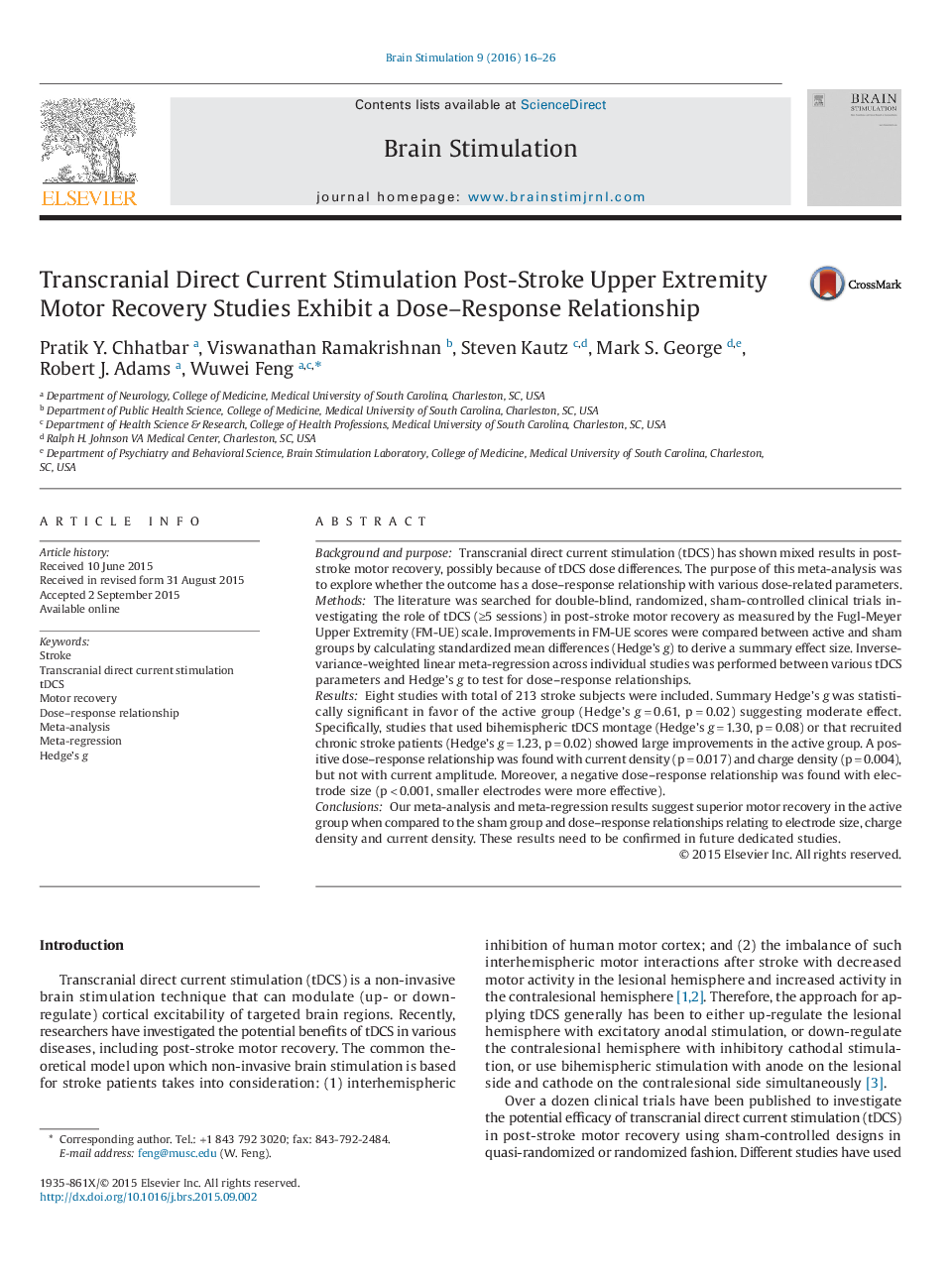| کد مقاله | کد نشریه | سال انتشار | مقاله انگلیسی | نسخه تمام متن |
|---|---|---|---|---|
| 6005113 | 1184659 | 2016 | 11 صفحه PDF | دانلود رایگان |

- Transcranial direct current stimulation (tDCS) shows dose-dependent effect in post-stroke motor recovery.
- Meta-analysis of tDCS stroke recovery studies discovered a dose-response relationship in motor improvement measured by FM-UE scale. Pad size, charge density and current density are correlated with the FM-UE change scores, but current amplitude is not. Effect size is relatively larger in subjects with chronic stroke when compared with acute stroke. Bihemispheric montage seems to offer a larger effect size in post-stroke motor recovery.
- Bihemispheric montage with anode on ipsilesional side and cathode on contralesional side also seems to offer a large effect size in post-stroke motor recovery. However, these results might be confounded by the fact that all the studies that used the bihemispheric montage recruited subjects with chronic stroke.
- Inverse-variance-based meta-regression shows that pad size, charge density and current density are correlated with the FM-UE change scores after tDCS therapy.
Background and purposeTranscranial direct current stimulation (tDCS) has shown mixed results in post-stroke motor recovery, possibly because of tDCS dose differences. The purpose of this meta-analysis was to explore whether the outcome has a dose-response relationship with various dose-related parameters.MethodsThe literature was searched for double-blind, randomized, sham-controlled clinical trials investigating the role of tDCS (â¥5 sessions) in post-stroke motor recovery as measured by the Fugl-Meyer Upper Extremity (FM-UE) scale. Improvements in FM-UE scores were compared between active and sham groups by calculating standardized mean differences (Hedge's g) to derive a summary effect size. Inverse-variance-weighted linear meta-regression across individual studies was performed between various tDCS parameters and Hedge's g to test for dose-response relationships.ResultsEight studies with total of 213 stroke subjects were included. Summary Hedge's g was statistically significant in favor of the active group (Hedge's gâ=â0.61, pâ=â0.02) suggesting moderate effect. Specifically, studies that used bihemispheric tDCS montage (Hedge's gâ=â1.30, pâ=â0.08) or that recruited chronic stroke patients (Hedge's gâ=â1.23, pâ=â0.02) showed large improvements in the active group. A positive dose-response relationship was found with current density (pâ=â0.017) and charge density (pâ=â0.004), but not with current amplitude. Moreover, a negative dose-response relationship was found with electrode size (pâ<â0.001, smaller electrodes were more effective).ConclusionsOur meta-analysis and meta-regression results suggest superior motor recovery in the active group when compared to the sham group and dose-response relationships relating to electrode size, charge density and current density. These results need to be confirmed in future dedicated studies.
Journal: Brain Stimulation - Volume 9, Issue 1, JanuaryâFebruary 2016, Pages 16-26